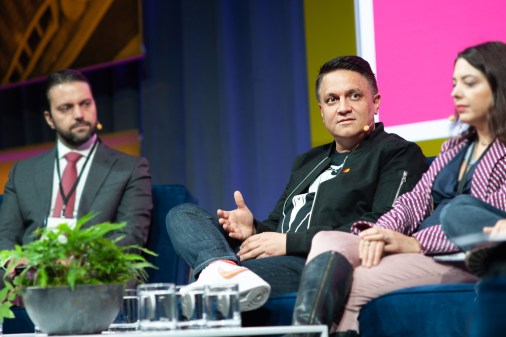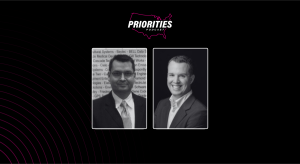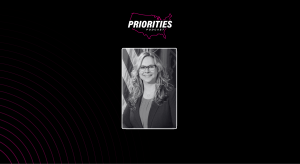Fragmented but not broken: America’s smart cities bind together

Perhaps because they played SimCity-style games in their younger years, many technologists working in government today are excited with the prospect of using “smart city” technology to transform the administrative process from one that is unpredictable, bureaucratic, opaque, slow and clunky into one that responds to the push of a button or the twist of a knob. The purpose of the smart city concept is to transform a busy, complex and unreliable metropolis into something that works precisely the way the people in charge want it to work.
The trouble is that the smart cities movement itself suffers from many of the same complexities it endeavors to solve. Fragmentation is its biggest threat. Within a given city, portfolios of smart city projects are often divided across departments and jurisdictions. Within a single technology office, smart city efforts are sometimes launched without a cohesive strategy or long-term plan. And the marketplace might have the biggest disparities of all, between the goals of vendors and the desires of the cities that would buy from them.
A recent report published by the National Institute of Standards and Technology adds new layers to the challenge: “The critical goal of interoperability is in danger of being overwhelmed by the large wave of isolated and customized solutions, along with the accompanying proliferation of proposed standards and protocols.”
Pablo Tomasi, a senior analyst with London-based consultancy IHS Markit, told StateScoop that the smart cities market is fragmented because it’s still in a “testing” or early “evolution” phase. As cities attempt to optimize services, find new sources of revenue or improve the livability of their neighborhoods through the adoption of new technologies, vendors are scanning for openings where they can plug in their products and generate sales.
“Another reason the market is in this state is because it’s a large market,” Tomasi said. “There are many verticals, many sub-verticals, different players providing different solutions, and there are different technologies that are involved, as well. The different technologies are very often competing with each other and that increases the fragmentation of the market, so from the city point of view, that increases the uncertainty of what will be the technology to bet on.”
Not getting any smaller
Globally, leading smart cities like Dubai and Singapore take advantage of their small geographic size and centralized governments to showcase what a tightly integrated system of data, sensors and computers can achieve — market fragmentation notwithstanding. And while American cities face bureaucratic challenges and must contend with the balancing of treasured civil and constitutional rights — like privacy — several large cities, like New York and Los Angeles, are advancing the market at a pace well above the global average, Tomasi said.
The fragmentation problem is compounded by the market’s rapid growth — it’s changing so quickly that by the time anyone has completely wrapped their mind around it, it’s something different, Nicole DuPuis, the National Leauge of Cities’ associate for urban innovation, told StateScoop. Nonprofits like NLC are a common resource for communities. NLC publishes reports, holds conferences, and creates programs that are all designed to help leaders understand their options in the market and focus their efforts on discrete projects that might yield positive, measurable results.
“When smart cities came into our lexicon, it was really a conversation driven by industry, because there are all these private sector companies that want to sell cities their software or whatever that may be and we are trying to lead that discussion from the public side,” DuPuis said. “It becomes a fragmented discussion because there’s so much growth in the Internet of Things sector — every day it seems like we find that there’s a new product out there that can play in this internet ecosystem that’s connected all of the sudden.”
Businesses are aware of the demand for smart city solutions, but finding a “solution” that actually solves something is a challenge left solely in the arms of government. It’s hard to find failed smart city projects because they all get filed under the category of “experiment,” and if a pilot investment doesn’t grow into something bigger, it’s easy enough for anyone to claim that the purpose all along was just to see if it would work. This is all new, after all. But no one wants to invest in projects that don’t go anywhere.
“We’ve heard from a lot of city officials that they have this overarching fear that whatever technology du jour that they invest in will become obsolete or not interoperable with something that comes a short time later,” DuPuis said. “I think that when cities think about this, they’re thinking about creating this kind of internet ecosystem that feels a little overwhelming once you get into what it’s really going to take to support something at that scale.”
For those who are overwhelmed, DuPuis suggests first a “psyche shift,” a fundamental culture change in the way agencies operate, so as to match the expansive and needs of the unifying technologies they may someday adopt, and secondly that cities take small steps. Cities like Atlanta are demonstrating through pilot projects that it’s possible to be both conceptually comprehensive while experimenting on a limited scale.
Starting small has kind of become the smart cities mantra, said Jesse Berst, chairman of the Smart Cities Council (SCC).
“Think big, start small and move fast,” Berst said, recanting the mantra. “It sounds kind of simplistic, but there’s a lot embedded in there and I think the place where most cities go wrong is they fail to think big first. ‘Think big’ doesn’t have to take a long time or be really complicated. It’s getting all your departments in a room, talking about what you want to do next, what your key priorities are and then looking for synergies.”
Through workshops and consulting with cities around the world, SCC is another group attempting to provide leadership in a space where any prominent leaders have yet to emerge. Berst himself admitted that leadership in the world of smart cities is in short supply.
“The marketplace is particularly fragmented,” Berst said. “People are coming at it from any and every angle, all with the smart cities label. So is it about the communications, or is it about the applications, or is it these mobile apps, or is it these body cameras, or is it the smart street lights? And so it’s been a challenge to get people thinking about this holistically and in a cross-cutting fashion.”
Out with the old (but in a smart way)
For many, the holistic view is the whole banana. If cities simply procure the next generation of technologies and thoughtlessly plop them on top of old systems and practices, a unique opportunity has been missed to fundamentally change how a city works. The one thing everyone StateScoop interviewed for this article agreed on was that smart cities projects need thoughtful and clearly-defined outcomes to succeed. The market has problems, but the future of smart cities begins with leadership.
Though no longer working for city government, Brenna Berman, executive director of the City Digital initiative at the Chicago-based UI Labs, said she found the market fragmentation “frustrating” during the course of her six years as Chicago’s chief information officer.
“The way it plays out is there’s not a lot of support tools or information to help cities that want to buy smart cities or IoT products to evaluate them,” Berman said. “Organizations like Gartner and IDC are developing alongside the marketplace, but if you’re going to buy a CRM application, for example, it’s actually relatively easy to evaluate, I don’t know, Salesforce against Dynamics and Oracle. It’s a much more mature marketplace, and then the standards for data integration and security in other marketplaces are much more mature.”
For cities buying smart city technology today, Berman said, the choice is ultimately a selection between different kinds of risk. A city can buy a single, large proprietary system that lacks integration and locks the government into licensing fees, or it can buy components from several vendors and attempt to integrate everything itself, setting an internal team on a clumsy upgrade path lacking mature standards, guidelines, or any guarantee of long-term support. But in either case, there’s an upshot, Berman said, which is that while the market may highly fragmented, some cities are finally becoming more organized internally, proposing solutions to these risky propositions that can be shared and duplicated.
A Smart City Playbook published on GitHub by the Boston Mayor’s Office of New Urban Mechanics offers a high-level template for project guidance. Guidelines for the Internet of Things published by the City of New York provide similar guidance, from data management and infrastructure, to privacy, operations and security.
In Washington D.C., an IoT lab and demo days fall under its Smarter DC initiative, a portfolio of dozens of technology projects that range from transportation and infrastructure to public safety and healthcare.
In Atlanta, an upcoming pilot on the city’s North Avenue Corridor is positioning the city to experiment with new procurements including vehicle-to-infrastructure systems, fiber, and Wi-Fi. Rather than pursue a risky project that spans the city, a comprehensive pilot in one area is hoped to bestow city leaders with lessons on what smart city technology can do when given a chance.
These cites all take different approaches, Berman said, but none of them are fragmented at all.
“They started out that way,” she said. “If you look at those three cities — [Boston, Washington D.C., and Atlanta] — three years ago, the answer would be yes. There’s a pilot here, there’s a pilot there, who knows what it will mean, but over time, they’ve developed very comprehensive approaches and I would imagine that’s what would happen for most cities, but it just takes time to learn and I would think as there’s more maturity in the marketplace and in the thought leadership, that will happen faster, too. It’s never helpful to be first.”
All sides have influence
New York City doesn’t mind being first on things, and that’s why it’s one of the nation’s smart city leaders. But even so, city Chief Technology Officer Miguel Gamiño said, it won’t be long before even the most advanced smart city efforts today look primitive in hindsight.
“In its overall lifespan, I think we will look back and realize that 2017 was the very, very early stages of applying these tools to this design thinking or outcome,” Gamiño said.
As a member of the Council of Global City CIOs, a group in which Berman is an alumnus, Gamiño is among those trying to mend the space’s fragmentation problems by promoting standards, creating a new open access interface for data sharing, and molding a market that is more cohesive and collaborative.
The products the industry focuses on are those that are the most profitable, but those usually aren’t the same places cities are interested in focusing on, Gamiño said. But, it’s not totally up to vendors to fix this discrepancy.
“The responsibility is equal parts,” Gamiño said. “The vendors in some ways could be doing less if the cities were doing more.”
Cities doing more, he said, means leaders equipping themselves with more expertise and knowledge, and being thoughtful about the outcomes being pursued — New York’s focus is on using technology to improve the many experiences that comprise a citizen’s daily life.
“In many different contexts, it’s been said that we should be using technology for peoples’ outcomes and needs, not for technology’s sake,” Gamiño said. “And this is a perfect example of the huge potential that this category of the industry holds to really make those impacts happen.”
This story was featured in StateScoop Special Report: Smart Communities (2017)





